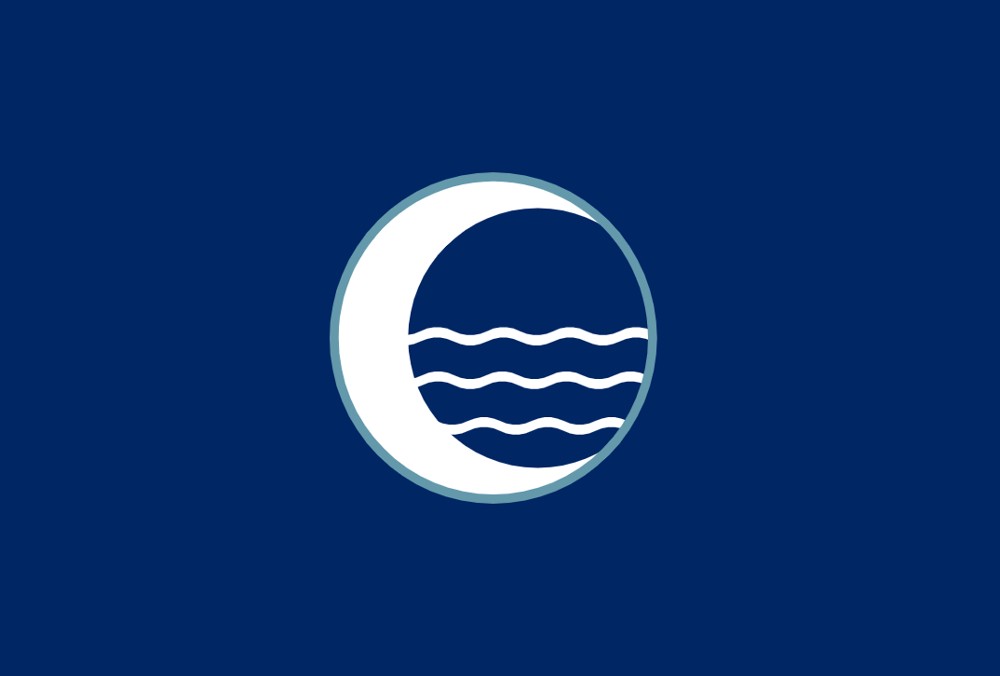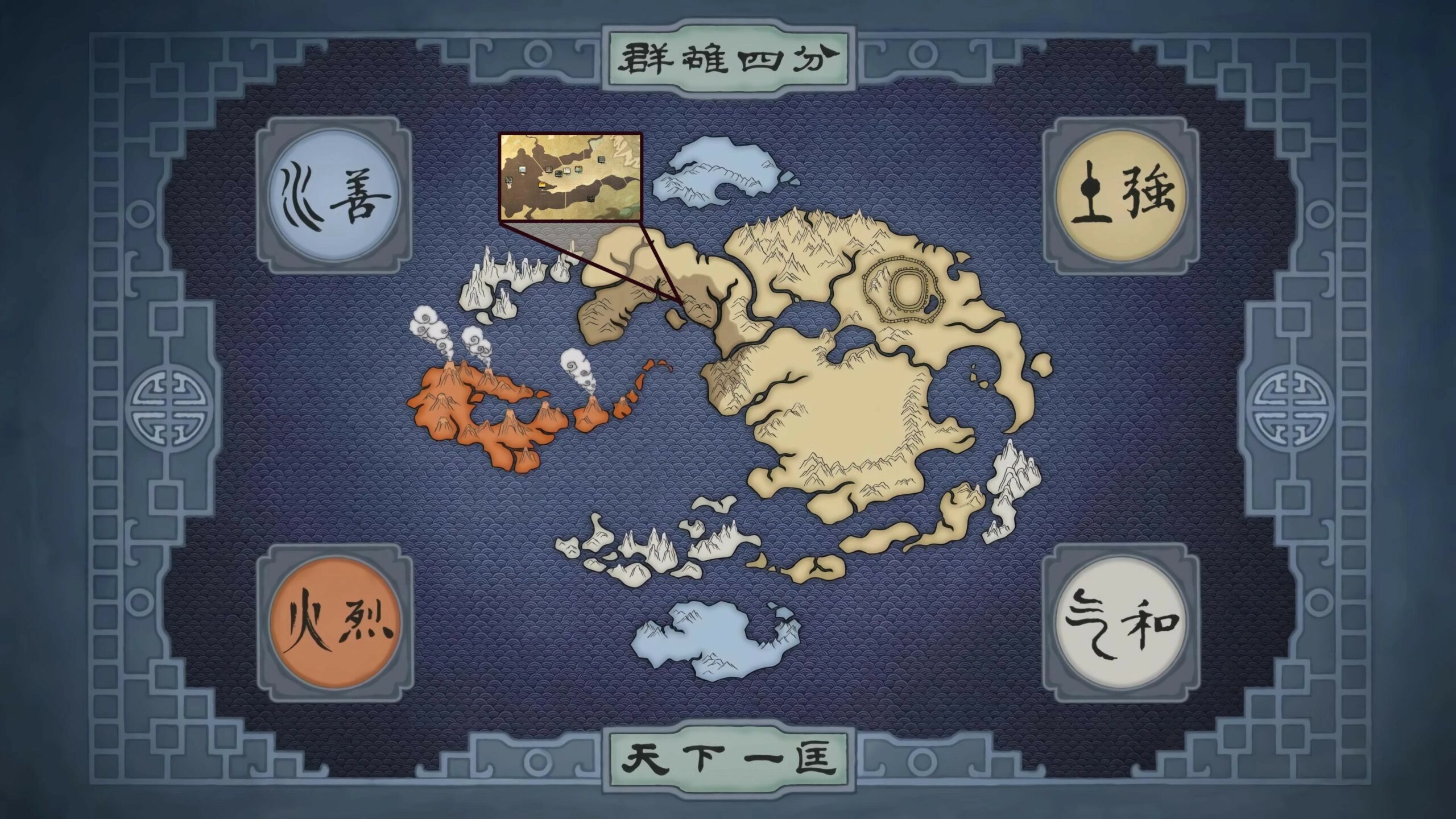AtLA: Understanding the Harmony of the Four Nations
Take a journey into the world of Aang and Korra as we discover the four nations (and a few others as a bonus).
Flameo, Hotmen! One of the main things that makes Avatar: The Last Airbender and The Legend of Korra great is the rich world where it all takes place. In the Avatar: Legend RPG, players get to explore that world through the periods of different Avatars. It’s saturated with history and based on real-world civilizations, the Four Nations that form the backdrop of the story are vibrant representations of the world.
The Fire Nation
Powerful and militant, the Fire Nation is the second-largest landmass. Though they truly found their inner evil during the Hundred Year War, they were always a bit aggressive. During the time of Avatar Kyoshi, they were embroiled in the Camillia-Peony War, a civil war in the same vein as the Greens and Blacks from House of the Dragon (though the name is a fairly clear reference to the War of the Roses).
Once Sozin took it upon himself to unite the nations, however, the Fire Nation’s military might was bent towards domination. They wiped out the Air Nomads, with the exception of Avatar Aang, and decimated the bending population of the Southern Water Tribe. Thankfully, Fire Lord Zuko brought the nation back to its noble roots, instilling the same sense of justice in his daughter Izumi and grandson Iroh.
In the real world, the Fire Nation very closely resembles Japan. Specifically, it evokes Japan during the reigns of Ieyasu Tokugawa and Hideyoshi Toyotomi. Their fashion resembles traditional Japanese wear during the feudal era, and their armor resembles traditional samurai garb. There is also Chinese influence, especially in the helms of officers and the weaponry. Such weapons include the Jian sword wielded by Master Piandao and later Sokka.
The Water Tribes
Based in the frozen North and South Poles, the Water Tribes are just what they sound like on the tin. They are hunters, trappers, and strong traditional warriors—sometimes to a fault. During the Hundred Year War, the Fire Nation ravaged the Waterbending population of the Southern Tribe. Safe behind their walls, the Northern Tribe became the more dominant of the two. However, after the war ended in 100 AG, the Southern Tribe was able to distinguish themselves as an independent nation.


As you can probably guess, the Water Tribes are based on the Inuit and other native peoples. Their weapons are usually made of bone or animal parts, as are their clothes. Even their warriors emulate hunting animals, similar to the Jaguar Warriors of the Aztecs.
The Earth Kingdom
The largest landmass of the Four Nations, the Earth Kingdom has also had the most difficult time. Between daofei crime families, Fire Nation colonies, inept leadership, and secret societies, it’s hard to live there. However, if you’re lucky enough to be in one of the major cities, like Omashu, you’re probably living large. The Earth Kingdom city of Ba Sing Se had the distinction of being unbreakable for hundreds of years. The outer wall was finally breached by a massive Fire Nation drill tank, but even that was stopped.
Like the Fire Nation, the Earth Kingdom draws a lot of inspiration from Imperial China. However, the largest inspiration seems to be Korean. This is especially obvious in the traditional hanbok garb worn by high-ranking Earth Kingdom citizens. It is possible that the inspiration references Toyotomi’s invasion of Korea in real-world history. In the same way, the Fire Nation invaded and colonized the Earth Kingdom.
The Air Nomads
Less of an organized nation than a loosely connected group, the Air Nomads moved from place to place. They devoted their lives to spiritual wholeness and the betterment of society. Though they didn’t have a traditional region, they did maintain four temples in the cardinal corners of the world. Each of these temples devoted themselves to raising young Air Nomads, two being devoted to boys and two to girls. They also helped out those who needed them as often as they could. The Air Nomads were unique in that all their members were benders thanks to their spiritual devotion.
The Air Nomads are based on Tibetan monks. Their garb, coloration, and hairstyles are all reminiscent of Buddhist monks. Even their belief system follows the tenets of the monks, including the study of martial arts for enlightenment rather than fighting.
Other Civilizations
The Fifth Nation
A loose collection of Pirate crews that banded together into a collective. They were nearly wiped out by Kyoshi when she lifted the sea floor and shattered most of their ships.
Republic City
Created by Avatar Aang as a symbol of unification, Republic City is an independent city. They owe no allegiance to any Nation, welcoming benders and non-benders from all over. Sadly, it was also rife with corruption, as seen in The Legend of Korra.
Foggy Swamp
These Waterbenders lived deep in the Foggy Swamp, and used their bending to manipulate mud and move their boats. They resembled deep Southern Americans, especially those that live on bayous. Hu, a member of the Foggy Swamp tribe, was even able to bend the water in plants.






